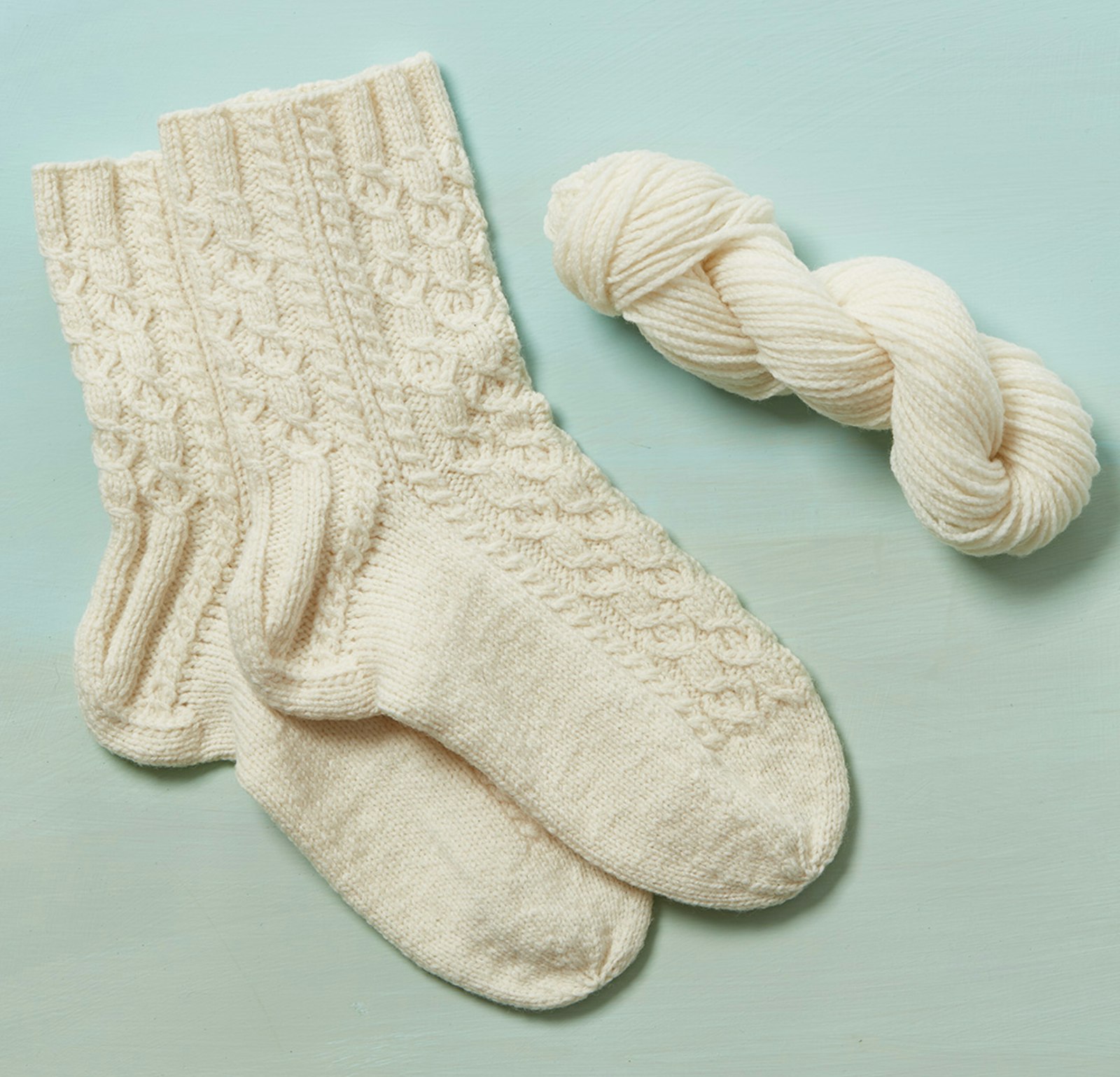What is a Cabled Yarn?
The cabled yarn construction combines at least four singles that have been plied with several layers of twist. The most common cabled yarn, a 2-by-2-ply, is created when two 2-ply yarns are twisted together opposite the plying direction. This results in a yarn that can still be supple and lightweight but is composed of fibers that are well secured, reducing pilling and surface abrasion—perfect for socks!
How to Spin Cabled Yarn
Cabled yarns can take some practice, so I always spin a few small samples before beginning a project. Finding balance in the final yarn depends on getting the right amount of twist in several previous steps.
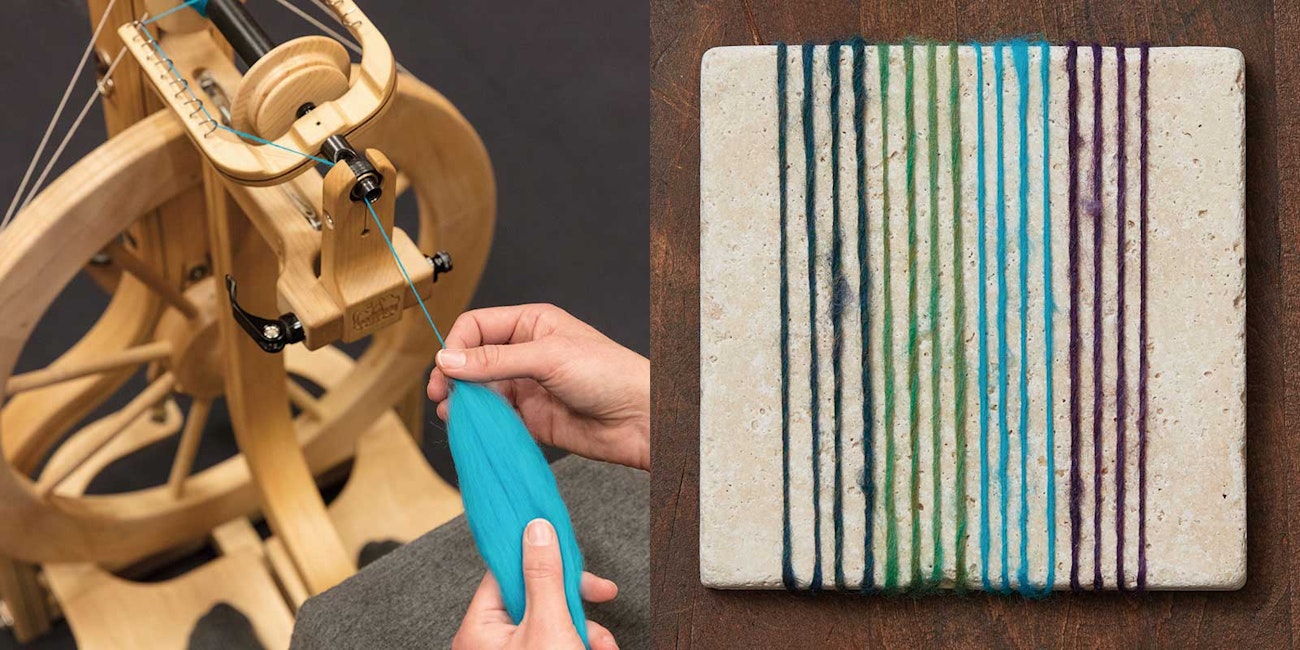
1. Spin four bobbins of singles to the right (Z).
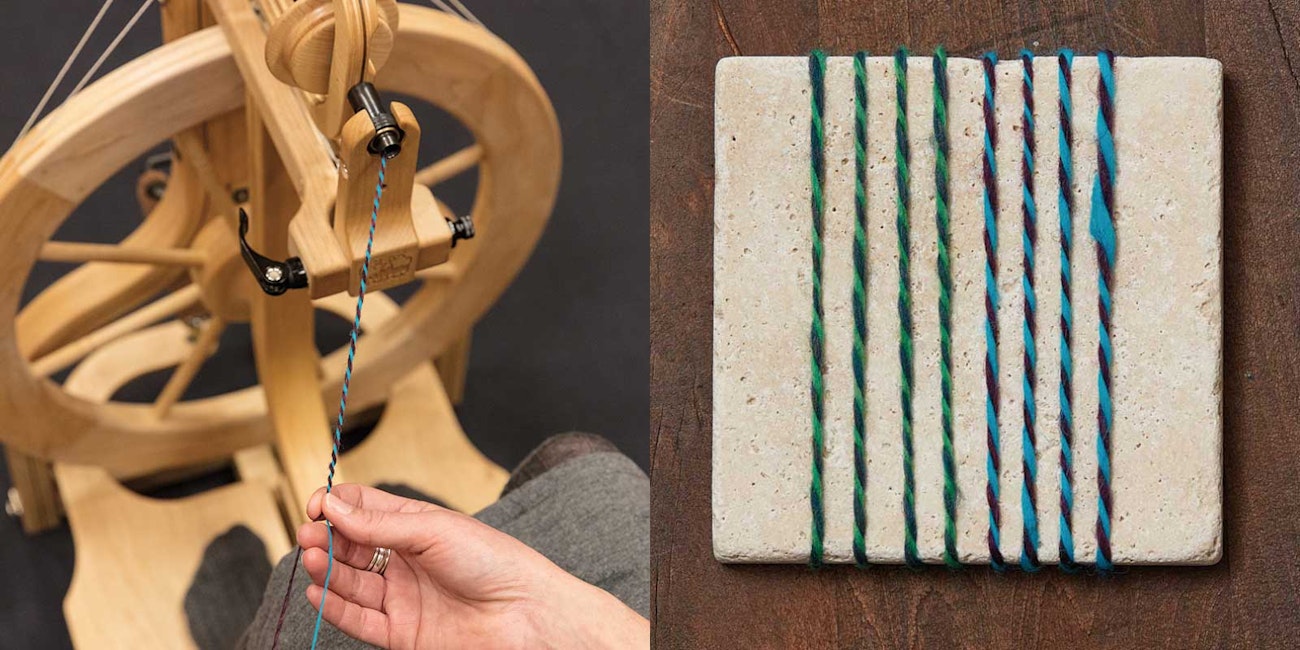
2. Using two of these singles, create a 2-ply yarn by turning to the left (S) as usual. Repeat for the remaining two bobbins of singles.
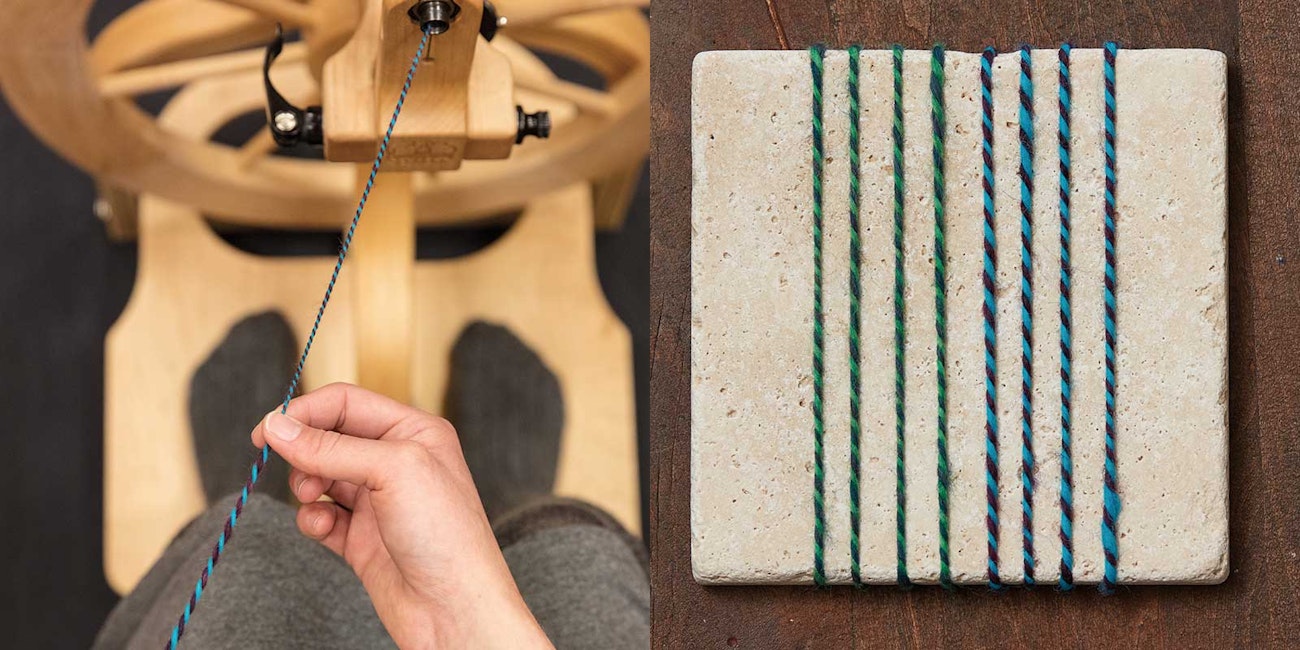
3. Send each 2-ply yarn back through the wheel or spindle to the left (S), adding the same amount of ply twist again. These 2-ply yarns now have twice the normal amount of ply twist.
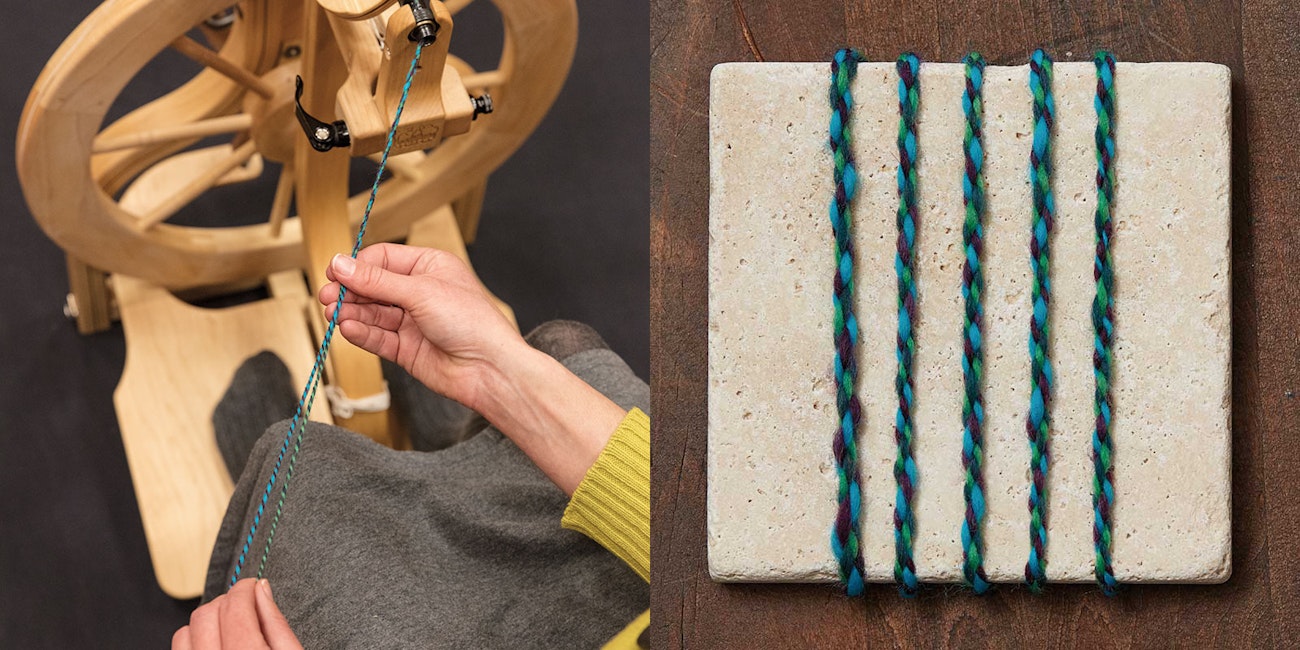
4. Cable the two 2-ply yarns to the right (Z): Set up the two yarns to ply as usual. Send them back through the wheel while it spins to the right, but do this fairly quickly and do not guide the yarn into place. Simply let the twist enter an arm's length of yarn, feed into the orifice, and repeat. Check the bobbin every so often to see that the yarn has the right amount of twist.
Cabled Yarn Troubleshooting
- After washing your yarn, does it feel too dense and tight like rope? Try starting with less twist in the singles (Step 1).
- Does your final yarn look like two 2-ply yarns instead of a cohesive 4-ply? The most common reason for this is not having enough extra twist in the 2-ply yarns (Step 3).
—Kate

